A friend of mine is getting married this weekend. It makes me think about a traditional rhyme.
Something old,
Something new,
Something borrowed,
Something blue.
Our most recent readings offer something along these lines while considering the marriage of education and technology.
One of the readings this week originated back in 1983, another in 1986. What could these decades old papers possibly offer to the Educational Technology union? If we are to use technology successfully in strategies such as cooperative collaboration and inquiry-based learning, it may be important to keep the basics in mind. Of course, educators have to plan for the “free riders” discussed in the article by Kerr and Bruun (1983). One of the most important reasons educators are turning to technology is because it has the potential to increase engagement and motivation. I doubt there are any teachers unaware of the potential pitfalls of group dynamics but some might still be working on ways to counteract them.
The 1986 article by L.Cuban is interesting because it is an old article discussing the cycle of new technology and educational innovations that educators are encouraged to embrace and then fall to the wayside as administrative support wains or moves on to the next new thing. For me, this is exemplified by my district’s financial decision to switch to the open-source software, LibreOffice. We were all forced to switch as this was the only offering on our school computers. Now, with a change in district administration, we have turned back to Microsoft Word. This is a problem for me because most of my files are now .odt files and the formatting is affected when I open them in Word. It puts me in the position of having to guess what the future will bring. Should I switch or should I continue using LibreOffice in anticipation of its possible return? This is why many are hesitant to jump on the FreshGrade bandwagon in my district. How long will it be before this initiative fizzles out now that its district champion has moved on into a new job? The turnover in district initiatives is something educators have experienced repeatedly as the migration of teacher training and Next-New-Thing-Fatigue impedes the adoption of something new. This is something that was mentioned with regard to the article by Whitelock and Bektik (2018).
With technology, there’s always something new. That said, with the pace of publication, it might be old by the time we see the research on it; research is not keeping pace with innovation. This was mentioned in regard to the article by Webb and Ifenthaler (2018). If the educator is keen and brings technology in when it is still new, it could be a while before someone’s research indicates whether or not it is truly beneficial. It is suggested that an educator or researcher’s best chance of finding timely research is to access conferences, conventions and student theses. In the meantime, many teachers are content to borrow from other teachers.
In the application of educational technology in elementary schools, educators are more likely to borrow something from other teachers rather than track down relevant, current research. This might be through colleagues within the school but is increasingly through sources such as online professional blogs, apps such as Pinterest, and social media such as Twitter. Many of the teachers I know would rather pick up an idea from somewhere, assess it alongside their experience, try it out in class, decide whether or not it was successful, and then share it out among their colleagues. This is where leadership becomes important.
Teachers are very good at focussing on what works. In general, we are eager to try new things as long as they are truly better and not a change for change’s sake. The exception to this is often technology which many teachers find intimidating. The role of school leadership is then to convince teachers that a particular application of technology is worth the time and effort to learn and implement it. They must excite and motivate their staff (Tschannen-Moran & Hofer, 2018). Once the ball is rolling, leaders must ensure the training results in a positive experience. This will require a flexible, accessible, and personalized approach (Howard, Curwood, & McGraw, 2018). Leadership must also ensure this technology continues to be supported until it is adopted into teacher practice and isn’t simply cast aside for the next big thing.
What is it about the next big thing can make educators blue, sad, need to be cautious? Teachers need to be careful that our foray into new technology results in positive outcomes and do everything possible to protect learners. Care needs to be taken to ensure there is equity for all learners. Consideration needs to be given to respect students of differing genders, social economic statuses, cultures, and individual learning needs. These considerations need to be real, not just tokens of inclusion, but genuine and sensitive inclusion. I have this idea. Now that I know how to turn a slideshow into a movie, I want to take a W̱SÁNEĆ based book I use regularly in my class and have an authentic SENĆOŦEN speaker read it to ensure the correct pronunciations of SENĆOŦEN words. Before I go ahead with my idea, I need to make sure I am not stepping on any cultural toes. I have to ask, “How will the implementation of this idea be received by those who are most affected by it?” The potential for positive impacts is great but educators in the mainstream demographic need to be careful.
Digital Equity is also a question of access. Not all learners have the same access to digital technologies. For me, this makes digital education in kindergarten more important. By the time they start kindergarten, some children have been immersed in technology and some have not. Some have been deliberately sheltered from it and some have had no access for financial or geographic reasons. If we want students to have equitable access to digital literacy, this should happen sooner rather than later. The digital divide will increase as time goes by. In addition, students’ exposure to technology does not mean they are competent (Kumpulainen, Mikkola, and Rajala, 2018). As we embed digital literacies into learning activities, teachers may be able to counteract some of the bad habits they pick up from home. For example, one of the first lessons I teach alongside learning the camera on an iPad is that students should ask before they capture a person’s photo. Issues of online privacy are just beginning to gain consideration in mainstream use by many adults. Let’s make sure children are aware of digital literacy and ideals as soon as possible.
The last point that makes me blue is technology-enhanced assessment. I agree that automated assessment needs educator influence to be successful. The question is, will automated assessment ever be as valuable and personalized as a teacher’s and do we really want it to be? Are we being asked to oversee our own demise? How will the data produced be used or abused by those outside the classroom? I’m thinking about the foundation skills assessment. and American-style standardized assessment.
Education and technology, I wish you a long, happy, and fruitful life together. Cheers!
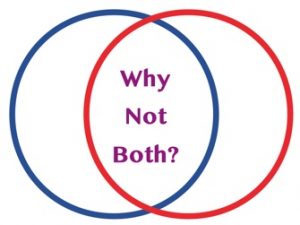
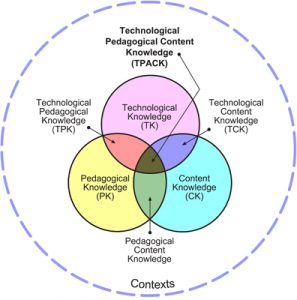
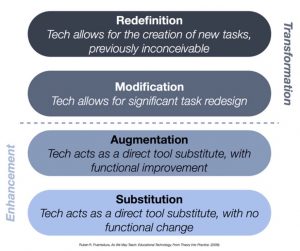


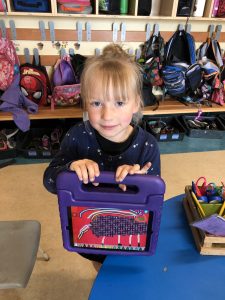


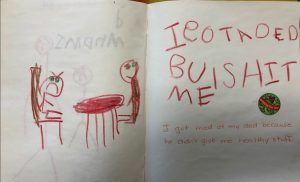
Recent Comments